Balkinization
an unanticipated consequence of
Jack M. Balkin
Balkinization Symposiums: A Continuing List
E-mail:
Jack Balkin:
jackbalkin at yahoo.com
Bruce Ackerman
bruce.ackerman at yale.edu
Ian Ayres
ian.ayres at yale.edu
Corey Brettschneider
corey_brettschneider at brown.edu
Mary Dudziak
mary.l.dudziak at emory.edu
Joey Fishkin
joey.fishkin at gmail.com
Heather Gerken heather.gerken at yale.edu
Abbe Gluck abbe.gluck at yale.edu
Mark Graber
mgraber at law.umaryland.edu
Stephen Griffin
sgriffin at tulane.edu
Jonathan Hafetz
jonathan.hafetz at shu.edu
Jeremy Kessler
jkessler at law.columbia.edu
Andrew Koppelman
akoppelman at law.northwestern.edu
Marty Lederman
msl46 at law.georgetown.edu
Sanford Levinson
slevinson at law.utexas.edu
David Luban
david.luban at gmail.com
Gerard Magliocca
gmaglioc at iupui.edu
Jason Mazzone
mazzonej at illinois.edu
Linda McClain
lmcclain at bu.edu
John Mikhail
mikhail at law.georgetown.edu
Frank Pasquale
pasquale.frank at gmail.com
Nate Persily
npersily at gmail.com
Michael Stokes Paulsen
michaelstokespaulsen at gmail.com
Deborah Pearlstein
dpearlst at yu.edu
Rick Pildes
rick.pildes at nyu.edu
David Pozen
dpozen at law.columbia.edu
Richard Primus
raprimus at umich.edu
K. Sabeel Rahmansabeel.rahman at brooklaw.edu
Alice Ristroph
alice.ristroph at shu.edu
Neil Siegel
siegel at law.duke.edu
David Super
david.super at law.georgetown.edu
Brian Tamanaha
btamanaha at wulaw.wustl.edu
Nelson Tebbe
nelson.tebbe at brooklaw.edu
Mark Tushnet
mtushnet at law.harvard.edu
Adam Winkler
winkler at ucla.edu
Compendium of posts on Hobby Lobby and related cases
The Anti-Torture Memos: Balkinization Posts on Torture, Interrogation, Detention, War Powers, and OLC
The Anti-Torture Memos (arranged by topic)
Recent Posts
Comparative Administrative Law at its Best
Just A Few Blogs
ACS Blog
Alas, a Blog
Althouse
Arts and Letters Daily
Atrios (Eschaton)
Bill of Health
Buzzflash.com
Buzz Machine
Cato at Liberty
Juan Cole (Informed Comment)
Concurring Opinions
The Constitution in 2020
Corrente
Crooked Timber
Daily Howler
Daily Kos
Dana Boyd
Brad DeLong
Digby (Hullabaloo)
Discriminations
Daniel Drezner
Kevin Drum (Mother Jones)
Electrolite
En Banc
Eunomia (Daniel Larison)
Fafblog
Michael Froomkin (Discourse.net)
GovLab (Beth Noveck)
Rick Hasen (Election Law)
History News Network
How Appealing
Ignatz (Sam Heldman)
The Importance of (Ernie Miller)
Infolaw
Instapundit
International Economic Law and Policy Blog
IntLawGrrls
Jacob Levy
Jesus' General
Jurisdynamics
The Kitchen Cabinet
Mark Kleiman
Law Blog Central
Larry Lessig
Lawyers, Guns and Money
Liberal Oasis
Brian Leiter's Law School Reports
The Leiter Reports
Marginal Revolution
Megan McArdle
Memeorandum
Metafilter
Mirror of Justice
The New Republic
Newseum
No More Mister Nice Blog
Brendan Nyhan
Opinio Juris
Orcinus
The Originalism Blog
Pandagon
Passport (Foreign Policy)
Overcoming Bias
Political Animal (Washington Monthly)
Political Theory Daily Review
Political Wire (Taegan Goddard)
The Poor Man
Virginia Postrel
Prawfsblawg
Public Reason
Jonathan Rauch
Raw Story
Redstate
ReligiousLeftLaw.com
Reporters Committee For Freedom of the Press
Reproductive Rights Blog
Rothman's Roadmap to the Right of Publicity
SCOTUS Blog
Seeing the Forest
Clay Shirky
The Shifted Librarian
The Situationist
Larry Solum (Legal Theory)
Andrew Sullivan
Talking Points Memo
Talk Left
Tapped
Tbogg
TechPresident
The Paper Chase (Jurist)
Tom Paine
Tom Tomorrow (This Modern World)
Eve Tushnet
Uggabugga
University of Chicago Law School Faculty Blog
Unqualified Offerings
The Volokh Conspiracy
War and Piece (Laura Rozen)
Wampum
Oliver Willis
Wonkette
Written Description
Matthew Yglesias
Yin
Your Choice of Feeds
1. XML
powered by
2. Atom Feed
3. RSS 2.0
Friday, January 21, 2022
Comparative Administrative Law at its Best
Guest Blogger
For the Balkinization symposium on Susan Rose-Ackerman, Democracy and Executive Power: Policymaking Accountability in the US, the UK, Germany, and France (Yale University Press, 2021). Matthias Ruffert What is our
aim in writing books on comparative administrative law? “Democracy and
Executive Power” is what administrative law, or the major part of it, is all
about, so it is the comparative method applied by Susan Rose-Ackerman that
makes the difference to most (or almost all) other presentations bearing a
similar title. Probably, we can think of three targets of comparative research
in administrative law. The first, nearest to what comparatists do in private law,
is less pertinent in the book discussed here: The creation of uniform or at
least harmonized principles and rules for a newly created jurisdiction.
European administrative lawyers often adopt that approach when elaborating on
how EU administrative law shall be designed and applied. In a book comparing
the US with the UK, France and Germany, this level of analysis must obviously
be missing. Second, a comparative study can bring the discussions of one’s own
administrative law and the scholarly debates around it to scholars from other
jurisdictions. Third, it can make the stakeholders in one’s own jurisdiction
think about alternatives, new principles or just creative scholarly approaches. The aim of
Susan Rose-Ackerman’s book is somewhere in between the two. Readers from the
three European jurisdictions (or elsewhere) get helpful and deep insights into
the state-of-the-art in US administrative law and are enabled to cross-check
their views with what is pertinent at the other side of the Atlantic. Such
explanation can be de-mystifying in eliminating misperceptions of what the
American situation might be. However, as I tend to submit with some reluctance,
but nevertheless with certain conviction, such use of comparative law rarely if
ever is able to influence the substantive debate elsewhere. This statement
points at aim number three: Writing about other jurisdictions to show what
could be improved in general, or in your own. This is what makes the book so
important for American readers. In this context, it is interesting to see that
Rose-Ackerman’s endeavour is mirrored by a German project, similarly by a
leading administrative law scholar, roughly (not exactly) of the same
generation, Eberhard Schmidt Aßmann (Das Verwaltungsrecht der Vereinigten
Staaten von Amerika, 2021). Comparative
administrative law is neither banal nor mono-dimensional. Comparative
administrative legal work requires enormous efforts, as can be seen in the long
list of co-operators, either individual or institutional, in the beginning of
the book. It is useful to work with (ideal) types of accountability (pp. 17-21):
performance, rights-based, policymaking, and it is possible to explain what
lies behind these terms in a manner that can attain general recognition. But
again, it is not as easy as that, and Rose-Ackerman’s book is aware of it.
Translations are often impossible; there is, to give an example, no legal term
in German that matches “accountable” exactly, and we learn that this is due to
a use of the term which is near to the root of the word in “financial
rectitude” (p. 17). In other instances, concepts which are crucial for one
administrative legal system are nearly unimportant to another one. This applies
to cost-benefit-analyses and Germany – there may be administrative law practitioners
who have never heard of such procedure (therefore very short: pp. 142-3).
We are also correctly referred to the context of the relevant rules and
principle. They are basically rooted in the respective requirements of
constitutional law. To take up German law again, the idea of the chain of
legitimacy is crucial – any office, and in the end any administrative decision
must potentially be traced back to the democratic sovereign, represented in
Parliament. This is of course a perspective that is neither realistic nor very
much open to exportation. And there is other context that must be considered in
comparison, much more difficult to detect, frankly speaking. How do human
rights and all the Brexit troubles influence English administrative law
(p. 36)? What about the social sciences turn in German administrative law
summarized under the provocative heading “neue Verwaltungsrechtswissenschaft”
(new science of administrative law; p. 54)? Should we not be aware about
such trends in law and its scholarship when writing about another jurisdiction?
Susan Rose-Ackerman is. Among the
many topical areas that would require more intensive scrutiny, two shall be
chosen as being representative for Susan Rose-Ackerman’s comparative approach.
First: agency independence. It took some time until the European discussion
understood why agencies had to be independent under U.S. constitutional law.
All general remarks on comparison in administrative legal matters are
applicable here: Agency independence in the U.S. is the product of a
distinctive historical development in government, legislation and Supreme Court
decisions. These conditions are absent in their concreteness in Europe, but
there are general grounds of independence transcending the different
jurisdictions: adjudicatory functions that require equidistance to the parties
affected, economic impartiality following privatization or the organization of
expert advice untainted by political influence (p. 87-8). In this regard,
we can identify many independent creatures in administrative organization in
all jurisdictions under scrutiny, but independence bears the same
constitutional background as in the U.S. Therefore, the challenges for
independence on the one hand and the maintenance of democratic legitimacy on
the other hand are different jurisdiction by jurisdiction. In the U.S.,
independence was considered to be challenged even by public subsidies (see the
Amtrak case, p. 111-2); in France and Germany, the formal judge-type
independence of the members of the Courts of Auditors (Cour de Comptes,
Rechnungshof) is noteworthy, but the effect of the reports of these bodies is
limited (pp. 114-5). At least, there is a lot more independence on both
sides of the Atlantic than just the one of agencies created by Congress. Second, the
role of interest groups either participating in rulemaking or in challenging
rules. The importance of public participation in rulemaking is a leitmotif of Susan Rose-Ackerman’s
approach to administrative law (see pp. 146 ff. of the book), and it
is not difficult to see that the notice-and-comment-procedure is far advanced
in this respect. The German experience is limited to public planning
(Planfeststellungsverfahren), and the slowness of planning due to inappropriate
participation (either excessive and creating nimbyism or insufficient and
creating public unrest at a late stage) shows that the American experience
could provide lessons. Curiously enough, this becomes apparent in the current
debate on speeding up planning processes to build a resilient infrastructure
for renewable energies (the so called “eco-eco-conflicts”). The extension of
standing, in particular for environmental groups and similar associations (pp.
215 ff.) is an aspect of the topic where jurisdictions on both side of the
Atlantic are struggling for the best solutions. The awareness of the divergent
interests involved is often overshadowed by political disequilibrium and
doctrinal uncertainty in the application of the pertinent rules, not least by
the Court of Justice of the EU. Comparative
administrative law is Susan Rose-Ackerman’s core academic interest, visible
hitherto in the handbook (Comparative Administrative Law, 2nd
edition) and
also in the very helpful blog (Comparative Administrative Law Blog) bringing together the works of
scholars from all over the world. “Democracy and Executive Power” unites the
main threads of scholarly work on the field. It is unequalled in asking the
right questions to the different administrative legal jurisdictions. In this,
at the same time it consolidates the long efforts to detect what is important
in comparative administrative law, and it is also a brilliant starting point
for research to come which will probably integrate jurisdictions outside the
core western ones: Asia (with Japan in particular) and the global south largely
speaking. Matthias
Ruffert is Professor of Public Law and European Law at Humboldt Universät zu
Berlin, Germany. You can reach him by e-mail at
matthias.ruffert@rewi.hu-berlin.de.
Posted
9:30 AM
by Guest Blogger [link]
Books by Balkinization Bloggers

Linda C. McClain and Aziza Ahmed, The Routledge Companion to Gender and COVID-19 (Routledge, 2024)

David Pozen, The Constitution of the War on Drugs (Oxford University Press, 2024)

Jack M. Balkin, Memory and Authority: The Uses of History in Constitutional Interpretation (Yale University Press, 2024)
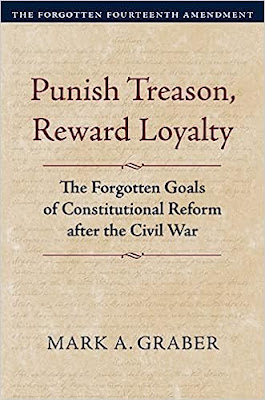
Mark A. Graber, Punish Treason, Reward Loyalty: The Forgotten Goals of Constitutional Reform after the Civil War (University of Kansas Press, 2023)
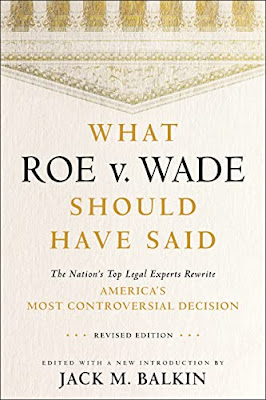
Jack M. Balkin, What Roe v. Wade Should Have Said: The Nation's Top Legal Experts Rewrite America's Most Controversial Decision - Revised Edition (NYU Press, 2023)

Andrew Koppelman, Burning Down the House: How Libertarian Philosophy Was Corrupted by Delusion and Greed (St. Martin’s Press, 2022)

Gerard N. Magliocca, Washington's Heir: The Life of Justice Bushrod Washington (Oxford University Press, 2022)
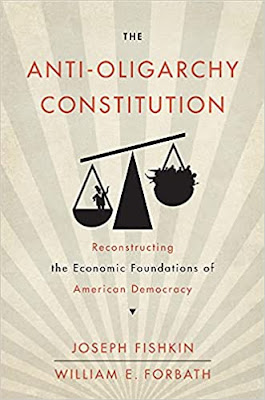
Joseph Fishkin and William E. Forbath, The Anti-Oligarchy Constitution: Reconstructing the Economic Foundations of American Democracy (Harvard University Press, 2022)
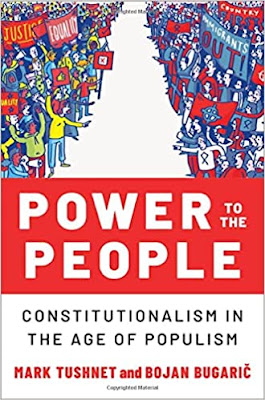
Mark Tushnet and Bojan Bugaric, Power to the People: Constitutionalism in the Age of Populism (Oxford University Press 2021).

Mark Philip Bradley and Mary L. Dudziak, eds., Making the Forever War: Marilyn B. Young on the Culture and Politics of American Militarism Culture and Politics in the Cold War and Beyond (University of Massachusetts Press, 2021).

Jack M. Balkin, What Obergefell v. Hodges Should Have Said: The Nation's Top Legal Experts Rewrite America's Same-Sex Marriage Decision (Yale University Press, 2020)

Frank Pasquale, New Laws of Robotics: Defending Human Expertise in the Age of AI (Belknap Press, 2020)

Jack M. Balkin, The Cycles of Constitutional Time (Oxford University Press, 2020)

Mark Tushnet, Taking Back the Constitution: Activist Judges and the Next Age of American Law (Yale University Press 2020).

Andrew Koppelman, Gay Rights vs. Religious Liberty?: The Unnecessary Conflict (Oxford University Press, 2020)

Ezekiel J Emanuel and Abbe R. Gluck, The Trillion Dollar Revolution: How the Affordable Care Act Transformed Politics, Law, and Health Care in America (PublicAffairs, 2020)

Linda C. McClain, Who's the Bigot?: Learning from Conflicts over Marriage and Civil Rights Law (Oxford University Press, 2020)
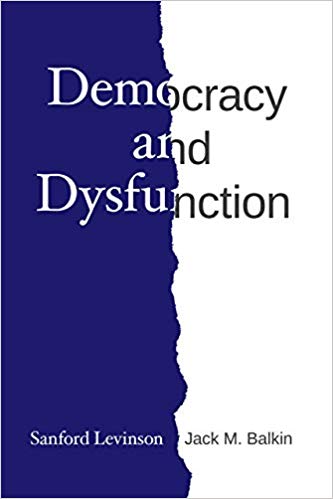
Sanford Levinson and Jack M. Balkin, Democracy and Dysfunction (University of Chicago Press, 2019)

Sanford Levinson, Written in Stone: Public Monuments in Changing Societies (Duke University Press 2018)

Mark A. Graber, Sanford Levinson, and Mark Tushnet, eds., Constitutional Democracy in Crisis? (Oxford University Press 2018)

Gerard Magliocca, The Heart of the Constitution: How the Bill of Rights became the Bill of Rights (Oxford University Press, 2018)

Cynthia Levinson and Sanford Levinson, Fault Lines in the Constitution: The Framers, Their Fights, and the Flaws that Affect Us Today (Peachtree Publishers, 2017)

Brian Z. Tamanaha, A Realistic Theory of Law (Cambridge University Press 2017)

Sanford Levinson, Nullification and Secession in Modern Constitutional Thought (University Press of Kansas 2016)

Sanford Levinson, An Argument Open to All: Reading The Federalist in the 21st Century (Yale University Press 2015)

Stephen M. Griffin, Broken Trust: Dysfunctional Government and Constitutional Reform (University Press of Kansas, 2015)

Frank Pasquale, The Black Box Society: The Secret Algorithms That Control Money and Information (Harvard University Press, 2015)

Bruce Ackerman, We the People, Volume 3: The Civil Rights Revolution (Harvard University Press, 2014)
Balkinization Symposium on We the People, Volume 3: The Civil Rights Revolution

Joseph Fishkin, Bottlenecks: A New Theory of Equal Opportunity (Oxford University Press, 2014)

Mark A. Graber, A New Introduction to American Constitutionalism (Oxford University Press, 2013)

John Mikhail, Elements of Moral Cognition: Rawls' Linguistic Analogy and the Cognitive Science of Moral and Legal Judgment (Cambridge University Press, 2013)

Gerard N. Magliocca, American Founding Son: John Bingham and the Invention of the Fourteenth Amendment (New York University Press, 2013)

Stephen M. Griffin, Long Wars and the Constitution (Harvard University Press, 2013)

Andrew Koppelman, The Tough Luck Constitution and the Assault on Health Care Reform (Oxford University Press, 2013)

James E. Fleming and Linda C. McClain, Ordered Liberty: Rights, Responsibilities, and Virtues (Harvard University Press, 2013)
Balkinization Symposium on Ordered Liberty: Rights, Responsibilities, and Virtues

Andrew Koppelman, Defending American Religious Neutrality (Harvard University Press, 2013)

Brian Z. Tamanaha, Failing Law Schools (University of Chicago Press, 2012)

Sanford Levinson, Framed: America's 51 Constitutions and the Crisis of Governance (Oxford University Press, 2012)

Linda C. McClain and Joanna L. Grossman, Gender Equality: Dimensions of Women's Equal Citizenship (Cambridge University Press, 2012)

Mary Dudziak, War Time: An Idea, Its History, Its Consequences (Oxford University Press, 2012)

Jack M. Balkin, Living Originalism (Harvard University Press, 2011)

Jason Mazzone, Copyfraud and Other Abuses of Intellectual Property Law (Stanford University Press, 2011)

Richard W. Garnett and Andrew Koppelman, First Amendment Stories, (Foundation Press 2011)

Jack M. Balkin, Constitutional Redemption: Political Faith in an Unjust World (Harvard University Press, 2011)

Gerard Magliocca, The Tragedy of William Jennings Bryan: Constitutional Law and the Politics of Backlash (Yale University Press, 2011)

Bernard Harcourt, The Illusion of Free Markets: Punishment and the Myth of Natural Order (Harvard University Press, 2010)

Bruce Ackerman, The Decline and Fall of the American Republic (Harvard University Press, 2010)
Balkinization Symposium on The Decline and Fall of the American Republic

Ian Ayres. Carrots and Sticks: Unlock the Power of Incentives to Get Things Done (Bantam Books, 2010)

Mark Tushnet, Why the Constitution Matters (Yale University Press 2010)
Ian Ayres and Barry Nalebuff: Lifecycle Investing: A New, Safe, and Audacious Way to Improve the Performance of Your Retirement Portfolio (Basic Books, 2010)
.jpg)
Jack M. Balkin, The Laws of Change: I Ching and the Philosophy of Life (2d Edition, Sybil Creek Press 2009)

Brian Z. Tamanaha, Beyond the Formalist-Realist Divide: The Role of Politics in Judging (Princeton University Press 2009)

Andrew Koppelman and Tobias Barrington Wolff, A Right to Discriminate?: How the Case of Boy Scouts of America v. James Dale Warped the Law of Free Association (Yale University Press 2009)

Jack M. Balkin and Reva B. Siegel, The Constitution in 2020 (Oxford University Press 2009)
Heather K. Gerken, The Democracy Index: Why Our Election System Is Failing and How to Fix It (Princeton University Press 2009)

Mary Dudziak, Exporting American Dreams: Thurgood Marshall's African Journey (Oxford University Press 2008)

David Luban, Legal Ethics and Human Dignity (Cambridge Univ. Press 2007)

Ian Ayres, Super Crunchers: Why Thinking-By-Numbers is the New Way to be Smart (Bantam 2007)

Jack M. Balkin, James Grimmelmann, Eddan Katz, Nimrod Kozlovski, Shlomit Wagman and Tal Zarsky, eds., Cybercrime: Digital Cops in a Networked Environment (N.Y.U. Press 2007)

Jack M. Balkin and Beth Simone Noveck, The State of Play: Law, Games, and Virtual Worlds (N.Y.U. Press 2006)

Andrew Koppelman, Same Sex, Different States: When Same-Sex Marriages Cross State Lines (Yale University Press 2006)
Brian Tamanaha, Law as a Means to an End (Cambridge University Press 2006)
Sanford Levinson, Our Undemocratic Constitution (Oxford University Press 2006)
Mark Graber, Dred Scott and the Problem of Constitutional Evil (Cambridge University Press 2006)
Jack M. Balkin, ed., What Roe v. Wade Should Have Said (N.Y.U. Press 2005)
Sanford Levinson, ed., Torture: A Collection (Oxford University Press 2004)
Balkin.com homepage
Bibliography
Conlaw.net
Cultural Software
Writings
Opeds
The Information Society Project
BrownvBoard.com
Useful Links
Syllabi and Exams